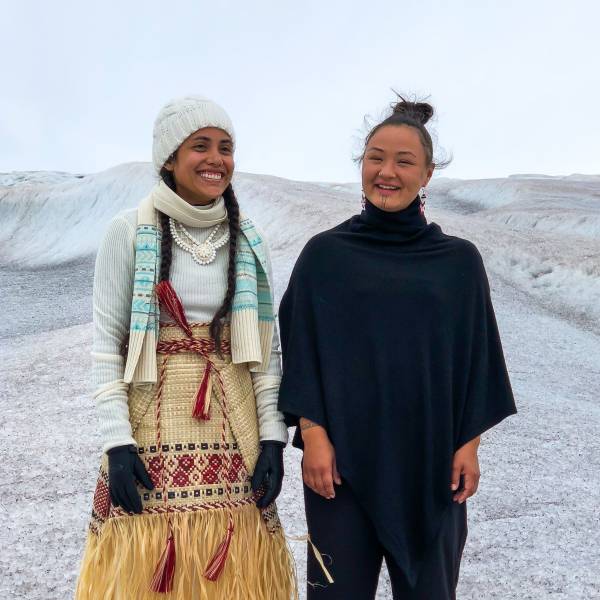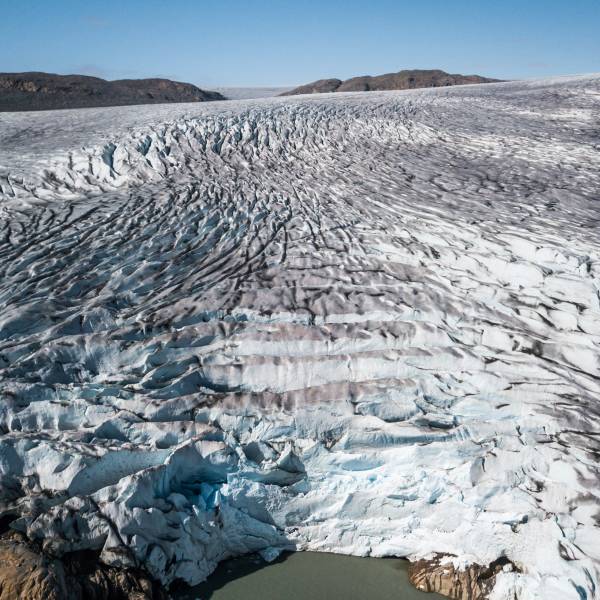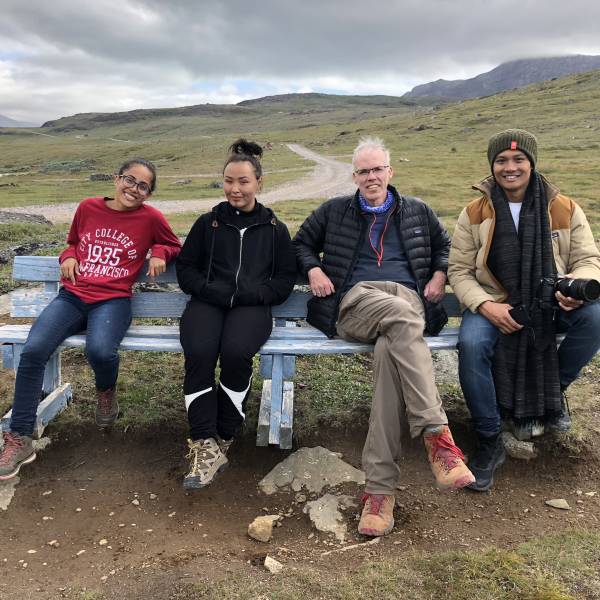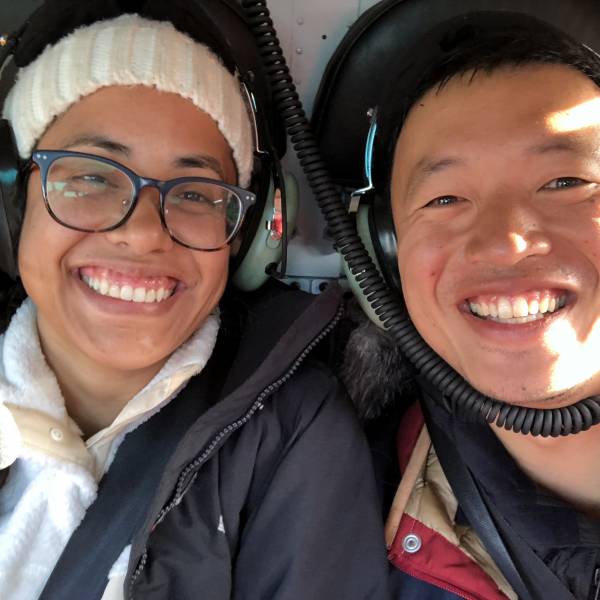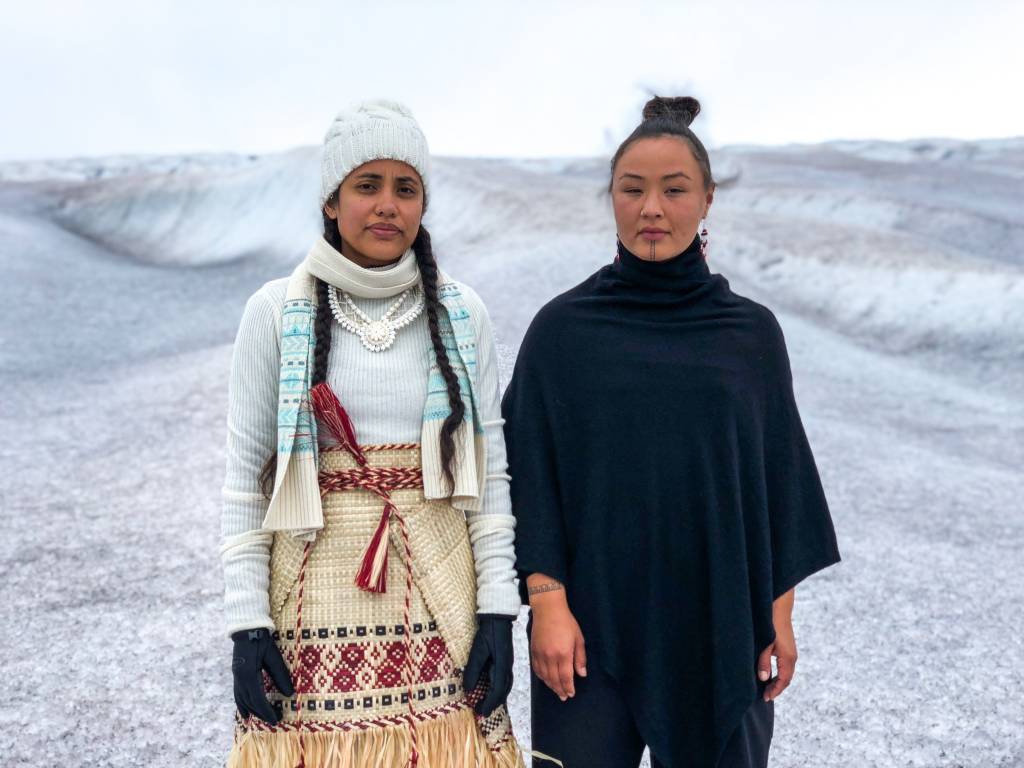350
Rise: From One Island to Another
Watch this poetic expedition between two islanders, one from the Marshall Islands and one from Kalaallit Nunaat (Greenland), connecting their realities of melting glaciers and rising sea levels. Kathy Jetñil-Kijiner and Aka Niviâna use their poetry to showcase the linkages between their homelands in the face of climate change. Through this video we get a glimpse at how large, and yet so small and interdependent our world is.
The science behind climate change and its causes has been clear for decades. And yet, it has not been enough to drive the change we need to see in order to salvage our planet. We hope this poem can spark the emotion and drive needed for more people to rise and take action.
This is an invitation to take a few minutes to watch this film, unplug from your daily distractions, immerse yourself in the beauty of our shared home, and let the poetry heal.
Watch
“Sister of ocean and sand, Can you see our glaciers groaning with the weight of the world’s heat?”
“…Sister of ice and snow, I come to you now in grief mourning landscapes that are always forced to change.”
Subtitles available and in other languages. Click on CC button
About the Team
Kathy Jetñil-Kijiner
Kathy Jetñil-Kijiner is a poet of Marshallese ancestry. She received international acclaim through her performance at the opening of the United Nations Climate Summit in New York in 2014. Her writing and performances have been featured by CNN, Democracy Now, Huffington Post, and more. In February 2017, the University of Arizona Press published her first collection of poetry, Iep Jāltok: Poems from a Marshallese Daughter. Her work has recently evolved and begun to inhabit gallery and performance art spaces – her work has been curated by the Honolulu Biennial in Hawai’i in February 2017, then the Smithsonian art lab ‘Ae Kai in July of 2017, and most recently the upcoming Asia Pacific Triennial in Australia in November 2018. Kathy also co-founded the non-profit Jo-Jikum, dedicated to empowering Marshallese youth to seek solutions to climate change and other environmental impacts threatening their home island. She has been selected as one of 13 Climate Warriors by Vogue in 2015 and the Impact Hero of the Year by Earth Company in 2016. She received her Master’s in Pacific Island Studies from the University of Hawaiʻi at Mānoa.
Aka Niviâna
Aka Niviâna is a Inuk writer and this is her on-screen debut. Aka started doing poetry with a wish to create nuanced conversations about not only climate change, but also colonialism and indigenous peoples rights. She believes in the importance of representation and the inclusion of black, brown and indigenous peoples.
Dan Lin
This is Dan Lin’s second film project. A professional photographer and photojournalist, Dan entered into the film world as a response to the complexity of issues arising from the Pacific, with a desire to provide a more visceral experience for broader audiences. He is primarily interested in telling stories of indigenous peoples and their connection to the land and sea.
Nick Stone
Nick Stone is a graduate of NYU’s Tisch School and has worked as a freelance filmmaker and editor for almost twenty years. His work includes everything from national advertising campaigns to independent films and documentaries. His strengths in storytelling and an ear for sound have won him awards. He continues to pursue new ideas, new projects and new ways of telling a story.
Rob Lau
Rob is a visual storyteller from the island of O’ahu with a B.A. in Human Ecology from College of the Atlantic. Through filmmaking, his work explores themes of social justice, Hawaiian culture, place-based knowledge, and how art can shift mindsets. A social disruptor in the name of transformative media, Rob strives to weave narratives that point to the future of our humanity while celebrating the cultural wisdom of the past.
Oz Go
Oz Go is a filmmaker and the founder of Narrative Lost. This non-profit film studio and artist collective is dedicated to making films that confront the most pressing social issues of our time, and on behalf of deserving organizations worldwide. Oz has also worked on commercial campaigns for Sports Illustrated, Adidas, Four Seasons, and MasterCard. He is a graduate of the University of Hawaii with a major in Anthropology.
The Making of Rise
Learn more about the journey.
The Making of Rise | Ethos
The Making of Rise | The Poem
The Making of Rise | The Journey
You can also read this essay that Bill McKibben wrote about the experience. Published on The Guardian.
Rise
By Kathy Jetñil-Kijiner and Aka Niviâna
Sister of ice and snow
I’m coming to you
from the land of my ancestors,
from atolls, sunken volcanoes–undersea descent
of sleeping giants
Sister of ocean and sand,
I welcome you
to the land of my ancestors
–to the land where they sacrificed their lives
to make mine possible
–to the land
of survivors.
I’m coming to you
from the land my ancestors chose.
Aelon Kein Ad,
Marshall Islands,
a country more sea than land.
I welcome you to Kalaallit Nunaat,
Greenland,
the biggest island on earth.
Sister of ice and snow,
I bring with me these shells
that I picked from the shores
of Bikini atoll and Runit Dome
Sister of ocean and sand,
I hold these stones
picked from the shores of Nuuk,
the foundation of the land I call my home.
With these shells I bring a story of long ago
two sisters frozen in time on the island of Ujae,
one magically turned into stone
the other who chose that life
to be rooted by her sister’s side.
To this day, the two sisters
can be seen by the edge of the reef,
a lesson in permanence.
With these rocks I bring
a story told countless times
a story about Sassuma Arnaa, Mother of the Sea,
who lives in a cave at the bottom of the ocean.
This is a story about
the guardian of the Sea.
She sees the greed in our hearts,
the disrespect in our eyes.
Every whale, every stream,
every iceberg
are her children.
When we disrespect them
she gives us what we deserve,
a lesson in respect.
Do we deserve the melting ice?
the hungry polar bears coming to our islands
or the colossal icebergs hitting these waters with rage
Do we deserve
their mother,
coming for our homes
for our lives?
From one island to another
I ask for solutions.
From one island to another
I ask for your problems
Let me show you the tide
that comes for us faster
than we’d like to admit.
Let me show you
airports underwater
bulldozed reefs, blasted sands
and plans to build new atolls
forcing land
from an ancient, rising sea,
forcing us to imagine
turning ourselves to stone.
Sister of ocean and sand,
Can you see our glaciers groaning
with the weight of the world’s heat?
I wait for you, here,
on the land of my ancestors
heart heavy with a thirst
for solutions
as I watch this land
change
while the World remains silent.
Sister of ice and snow,
I come to you now in grief
mourning landscapes
that are always forced to change
first through wars inflicted on us
then through nuclear waste
dumped
in our waters
on our ice
and now this.
Sister of ocean and sand,
I offer you these rocks,
the foundation of my home.
On our journey
may the same unshakable foundation
connect us,
make us stronger,
than the colonizing monsters
that to this day devour our lives
for their pleasure.
The very same beasts
that now decide,
who should live
who should die.
Sister of ice and snow,
I offer you this shell
and the story of the two sisters
as testament
as declaration
that despite everything
we will not leave.
Instead
we will choose stone.
We will choose
to be rooted in this reef
forever.
From these islands
we ask for solutions.
From these islands
we ask
we demand that the world see beyond
SUV’s, ac’s, their pre-packaged convenience
their oil-slicked dreams, beyond the belief
that tomorrow will never happen, that this
is merely an inconvenient truth.
Let me bring my home to yours.
Let’s watch as Miami, New York,
Shanghai, Amsterdam, London,
Rio de Janeiro, and Osaka
try to breathe underwater.
You think you have decades
before your homes fall beneath tides?
We have years.
We have months
before you sacrifice us again
before you watch from your tv and computer screens waiting
to see if we will still be breathing
while you do nothing.
My sister,
From one island to another
I give to you these rocks
as a reminder
that our lives matter more than their power
that life in all forms demands
the same respect we all give to money
that these issues affect each and everyone of us
None of us is immune
And that each and everyone of us has to decide
if we
will
rise
The Process of the Poem
Selecting the Legend
By Kathy Jetñil-Kijiner
Every poet has a different process for the ways in which a poem is a written. Some poems come in a flash of emotion – some require research, a vision, a message, or a specific audience. Lately, my process has begun with one integral aspect: the legend.
With the last few poems I’ve written, I’ve tried to balance the piece by grounding it in some sort of legend – for the poem on nuclear related birth defects, I used the legend of the mejenkwaad, a Marshallese woman demon, to discuss the feeling of horror that I imagined Marshallese women must have felt when giving birth to what came to be called “jellyfish babies.” For the poem I wrote for the Vatican, that had to do with faith, I used the legend of the whale and the bird – a legend that discussed an arrogant whale who was taught a lesson when thousands of birds drank up the ocean and left him beached. This was chosen to discuss faith in collective action.
Rise from One Island To Another:
From the Marshall Islands to Greenland, watch this breathtaking short film about poetic resilience in the face of the climate crisis.
Watch the film in full and, read more about this project.
And then sign up for all the latest news from 350.org and the Fossil Free movement in the box on the right.
